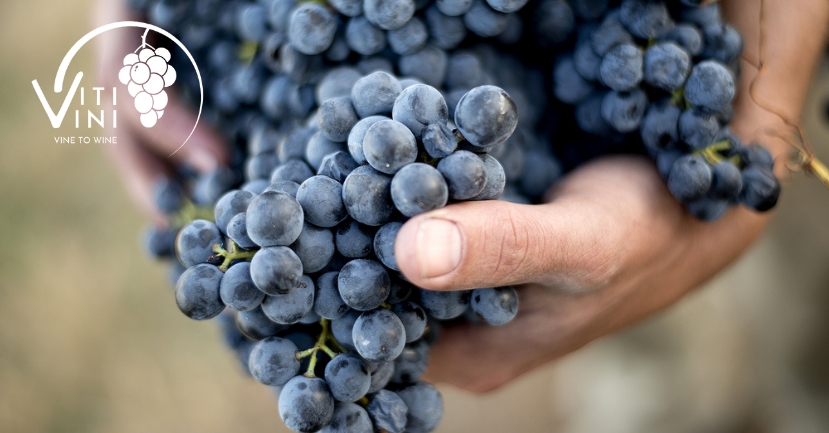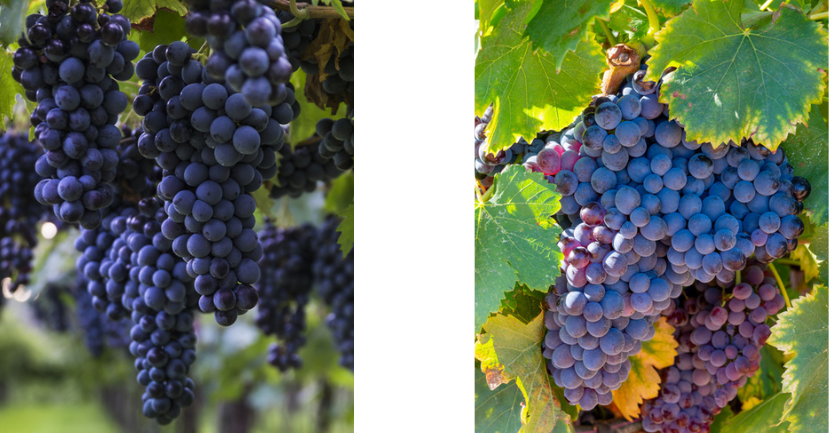BLOG
Vine to Wine: A Year of Viti/Vini - October
Nova Cadamatre MW
Viticulture Insights

In October, most areas of the northern hemisphere are in harvest and going full out!
Many white varieties finish in early October. Although some reds (particularly early-ripening Pinot Noir) may have started harvest in September, generally, October is the month when most red varieties are picked.
In September’s post, we explored the harvest parameters for white grapes. The factors that a winemaker considers when picking red grapes are similar… flavor, acid, sugar, etc. However, there are two key harvest parameters that are more important (and impactful) for reds than whites: tannin ripeness and anthocyanin accumulation (color).
Tannins are a group of compounds which give wine texture and mouthfeel. They are perceived as bitter or astringent on their own but can add attractive velvety or silky characteristics (in addition to a complimentary and pleasant bitterness) when part of the complex solution that is wine.
Unripe tannins can be very astringent and taste “green.” Such tannins indicate that the fruit was not fully mature at harvest. Therefore, waiting to harvest the fruit until the tannins evolve is critical for ideal texture and flavor in the finished wine. The tannins can be managed during the extraction process. A winemaker can choose to either extract more or less tannin, however nothing in the fermentation process will make green tannins taste riper if the fruit was picked too early.
Anthocyanins are a class of color compounds that give red wine its red color. They are also found in other plants such as purple carrots and purple sweet potatoes; they are also what give red maples their distinctive red color in the fall. Anthocyanins start accumulating at veraison and continue to increase most of the fall. Then, accumulation levels off and the anthocyanins start to break down. Some winemakers monitor the increase of anthocyanins and opt to pick just as color accumulation starts to level off.
Anthocyanin accumulation is variety dependent.
Grapes such as Cabernet Sauvignon (left picture) can have extremely high levels of pigment, while others, such as Grenache (right picture) and Nebbiolo, have much less.

It is important to note that anthocyanin accumulation and its subsequent degradation is not tied to other ripeness factors such as tannin ripeness, flavor accumulation, acid degradation, or sugar accumulation. They are all independently moving at the same time, but none completely in synch. Therefore, there is no one “right time” to pick. As a winemaker, one is trying to capture the fruit when all variables are the closest to ideal (and maybe one or two actually hit the mark). Much of the decision on when to pick has to do with wine style and winemaker preference.
There is another factor to consider when deciding picking time: Mother Nature. Late in the season, the weather can be unpredictable and turn detrimental. Late season rains can devastate a crop. Early frosts can force harvest prior to the fruit reaching optimal maturity. Botrytis can wreak havoc, particularly in humid areas or with susceptible varieties such as Pinot Noir. A winemaker must always watch the weather while there is fruit on the vine, particularly during the fall.
Once the fruit is harvested and arrives at the winery, there are many decisions that will impact wine style going forward. One of the first “forks in the road” is whether to destem or not. If included in the fermentation, ripe stems can add a spiciness to the aroma and additional tannin on the palate. This is one of the reasons it is so common to see some stem inclusion for Pinot Noir, but very little for Cabernet Sauvignon; Cabernet so rarely needs extra tannin.
Once the fruit is in the tank, a winemaker can opt to perform a saignée. “Saignée” literally means “to bleed” in French. The technique siphons off a certain percentage of juice (that is typically fermented into a separate wine: rosé). Saignée increases the skin to juice ratio of the remaining must in the tank resulting in an increase in the concentration of flavor compounds, pigment, and tannin in the final red wine. It is important to remember that both good and bad characters are concentrated, so concentration by itself does not always result in a better wine. One must start with good quality, ripe fruit from the start.
One of the next decisions concerns “cold soak.” Will there be one, and if so, for how long? Cold soaks allow the winemaker to extract color early in the winemaking process without having to worry about how much tannin is being extracted at the same time. (Tannins really do not start to extract significantly until some alcohol has built up during fermentation.) Since anthocyanins are soluble in aqueous solutions, they will readily extract during a cold soak. Since temperatures are kept low, fermentation does not initiate.
Although counterintuitive, this step does not lead to a darker wine, rather it allows a winemaker to have greater control over the timing of the extraction of color. This is important to prevent over extraction towards the end of fermentation. Cold soak allows a winemaker to dial in the tannins without having to continue trying to extract color at the end.
The next winemaking variable is yeast selection. Wild or cultured? (For more information on this topic check out August’s blog post.) As fermentation progresses, grape skins and other solids are pushed to the top of the vat by carbon dioxide. As these solids float upwards and collect, they form a “cap” on top of the fermenting liquid below. Since the winemaker is trying to extract flavor compounds, pigment and tannin from the skins, this cap needs to be broken up and re-integrated into the fermenting must so that extraction can occur. This process is referred to as “cap management.” It is not only important to break up the cap for extraction purposes, but also to prevent spoilage organisms from developing and the skins from drying out.
There are generally two main methods of cap management: pump overs or punch downs. Pump overs allow for greater extraction. This technique pulls the fermenting must out from below the cap and returns it to the top of the cap which then allows the liquid to percolate down through the skins further extracting color and tannin. In this method, the wine undergoes the turbulence of the pump and some oxygen exposure. Punch downs are more gentle. Paddles, manual or mechanical, push the cap back into the liquid below. Think of the difference in standard drip and French Press coffee-making methods. Pump over is your standard drip coffee method while punch downs are akin to the French Press. Both work, but punch downs are only practical in open top tanks and vats, while a pump over can be carried out in closed or open tanks.
During the cold soak (if any) and the active fermentation, the winemaker will taste the wine frequently to see how extraction is progressing. He or she will then either increase or decrease the extraction level by adjusting the number of days the pump over or punch down takes place and the daily frequency. After the winemaker has reached the desired level of extraction, he will only focus on maintaining a healthy cap (by keeping it moist) until ready to go to press.
At this point, the wine goes into what is called “extended maceration.” This is the time after which fermentation has finished but the wine has not gone to press. The wine is still on its skins. The wine is (usually) dry at this point (i.e. no residual sugar). The winemaker will continue to taste the wine to determine the right moment to press. The mouthfeel changes and develops and the winemaker will wait until the wine has reached his or her desired style before pressing.
The Changing Mouthfeel of Extended Maceration
Each tank/vat of wine reacts a little differently to extended maceration. Some tanks increase in body; others just get more tannic. Winemakers just try to capture the point at which they feel the wine is closest to their intended wine style.
Some winemakers use no extended maceration and others leave wine on the skins for many weeks. These are all stylistic decisions and very unique and personal to the winemaker making the decisions.
After the new wine is pressed off, it will typically go through malolactic conversion… which we will explore in next month’s post along with post-harvest vine care.
ABOUT "VINE TO WINE: A YEAR OF VITI/VINI" SERIES:
“Vine to Wine” is a new blog series that chronicles what is happening in the vineyard and in the winery each and every month of the calendar year. Nova Cadamatre, MW and winemaker, will author these authoritative and detailed posts drawing upon her studies (Cornell Viticulture and Enology graduate) as well as her winemaking experience in California, China and the Finger Lakes.
Each “Vine to Wine” installment details that month’s vineyard and winery tasks with deep dives into a particular grape growing or wine making topic such as pruning methods and training systems or barrel aging and fermentation vessels.
The series is designed to give wine students and educators an opportunity to develop or hone their technical savvy.
MORE "VINE TO WINE" ARTICLES:
Want to know when new blog articles are released? Join this list to be notified!



